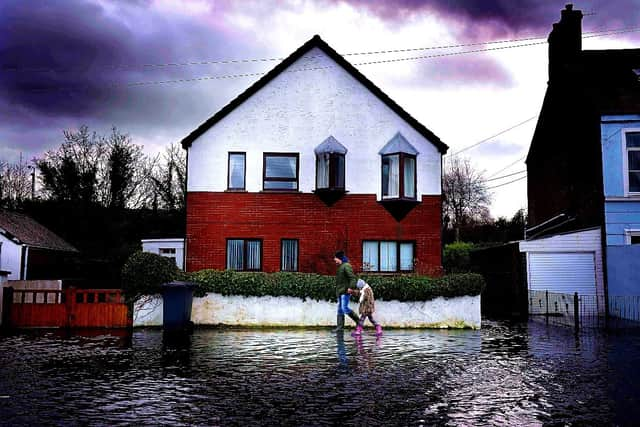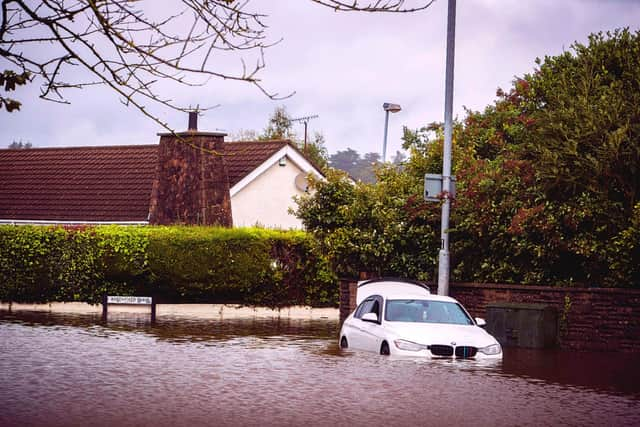Northern Ireland excluded from flooding forecast system that covers Great Britain says climate change report
and live on Freeview channel 276
That is one of the findings of a big new report into how well-braced Northern Ireland is to withstanding pending changes to the climate.
The authors of the report belong to the Climate Change Committee, a body set up to advise the UK government in 2008 and comprised largely of several senior scientists.
Advertisement
Hide AdAdvertisement
Hide AdOne finding which appears several times in the report is that, in Northern Ireland, "coverage of weather warning systems is different to the rest of the UK... there is currently no flood forecasting and warning system in NI".


In England, for example, the Environment Agency runs the country's flood forecasting system, which involves monitoring rainfall, river levels, and sea conditions.
They then issue three levels of warning – flood alerts, flood warnings, and severe flood warnings.
Flood warnings can be checked online, or the public can sign up for them online.
Advertisement
Hide AdAdvertisement
Hide AdThe area covered by flood alerts (telling people about a possibility of flooding and encouraging them prepare) is generally bigger than that for flood warnings (which alert people that flooding is happening, and they should take action to protect).


Severe flood alerts can also be issued via the government's new emergency mobile phone alarm system.
Around 86% of properties at risk of flooding in England fall are in areas covered by flood warning systems, with similar set ups in Wales and Scotland.
This week's report by the Climate Change Committee - titled simply 'Adapting to climate change: Progress in Northern Ireland' - indicates that NI should also consider such a system, particularly since "climate change will increase the number of properties at risk".
Advertisement
Hide AdAdvertisement
Hide AdIn terms of what this higher risk of flooding means in practice for the Province, the report cites figures showing that there are some 3,233 Northern Ireland Electricity Networks in areas of potential significant flood risk right now.
Meanwhile 183km [52 miles] of NI's 339km [210 miles] of railway track "are currently at significant risk of surface water flooding" – adding that "under a 2C warming scenario, the length of railway at risk is projected to increase by 64% by the 2050s, and by 84% by the 2080s".
The report gives the following overview of what has happened so far, and what the Province can expect in the future.
"Compared to average conditions in the 1970s, the average temperature in Northern Ireland has risen by 0.7⁰C, rainfall in Northern Ireland has increased by 6.4% and sea level around the UK has risen by 16cm [6.3in] to date," it says.
Advertisement
Hide AdAdvertisement
Hide Ad"In recent years Northern Ireland has experienced its warmest year on record in 2022 and recorded its highest temperature of 31.3°C in mid-July 2021 in Castlederg in Tyrone. Northern Ireland has also experienced drought over recent years, most recently in 2021 and 2022…
"Winters will be warmer and winter rainfall is expected to increase by around 3% by 2050 (relative to average conditions around 1990).
"Summers are expected to be hotter in Northern Ireland and summer rainfall is projected to decrease by around 11% by mid-century.
"More intense summer rainfall is more likely despite the trend for the season as a whole.
Advertisement
Hide AdAdvertisement
Hide Ad"Sea levels in Belfast could rise by around 15 cm by 2050. "